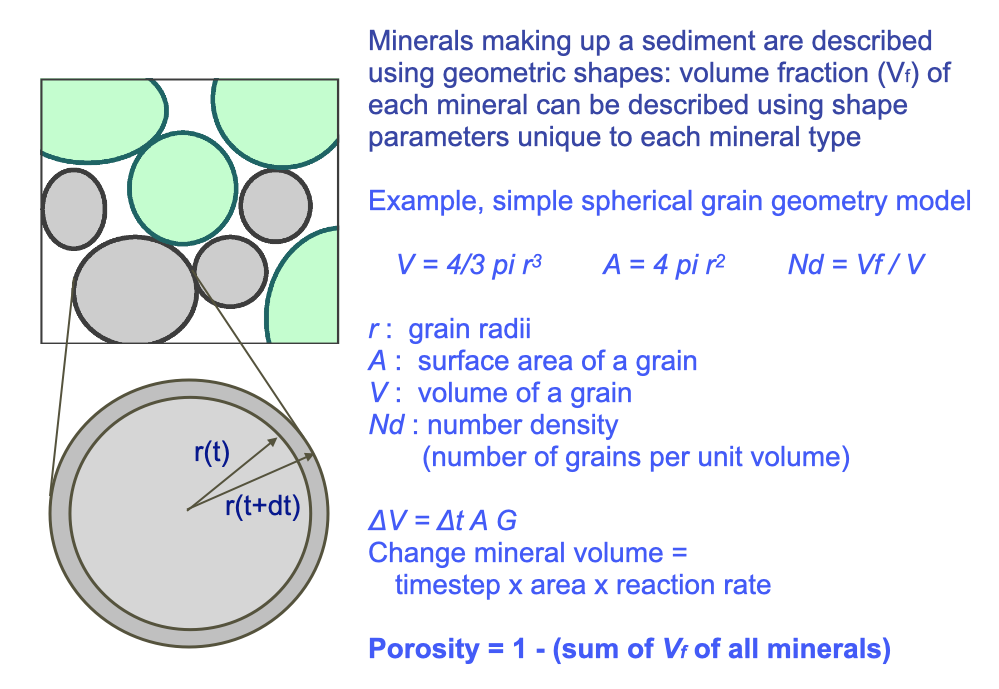The Sym.8 is a proprietary reactive-transport water-rock interaction simulator of this company. It can be used to carry out speciation, batch, 1D, 2D, and 3D water-rock interaction and reactive-transport simulations.
The simulator is based on the elemental mass-balance method coupled with composite textural and compositional media model (Park, 2014). This methodology preserves tight coupling between mass-transfer and reactions, to the effect that mass is conserved better than 99.9% between mass-transfer and reactions.


This methodology is sequentially iterated with a composite texture model. In this model rocks and sediments are described as a composite material consisting of geometrically described minerals and salts, for example, as a collection of spheres. Each sphere is defined by volumetric composition and grain size. Given these two pieces of information individual grain volume and number of grains in a unit volume can be computed.
The particular importance of defining minerals with defined geometry and volume is that this information can be used to evolve rock composition as water-rock interactions progress. This texture model provides reactive surface area to be used in the kinetic reaction equations; in turn, the equation provide rate of change of mineral volumes. This information can be used to modify the grain geometry and composition as simulations progress (see Park, 2014).

This is a unique feature available only in Sym8 and Sym8-derived simulators. This model can be adapted to describe more complex lithologies, such as rocks with bimodal and/or multi-modally distributed mineral grain populations (see Budd and Park, 2017 and 2019).
Some of the petrophysical parameters that can be calculated using the textural model parameters include porosity, permeability (fair-hatch equations), tortuosity (Arch’s Law), bulk density, thermal conductivity, and heat capacity. This is not a comprehensive list of properties. All properties evolve in a simulation when any changes occur to grain geometric properties (and therefore compositions) of any minerals.
Compactions (chemical and mechanical) are not included in the textural model, to date.